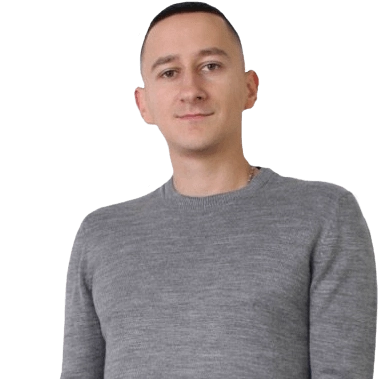

Inside Cleveland Clinic: Pioneering Innovation & AI in Healthcare with Jennifer Owens
- From Physics to Patients: A Data-Driven Journey
- Large Systems, Slow Change—and Why That’s Not Always Bad
- Startups Welcome, with a Dose of Patience
- Why Scribe Tools Are a Game Changer for Burnout
- AI Is Already Here—Now Comes the Governance
- Bias, Hallucination, and the Ethics of Trust
- Interoperability, Data Privilege, and the Future of Access
- Where Healthcare Is Headed—and What Startups Should Know
When we think of innovation in healthcare, it's easy to focus on flashy startups or cutting-edge tools. But true transformation often happens inside established institutions—slowly, steadily, and with intention. That’s the story Jennifer Owens tells in her work at the Cleveland Clinic, where she serves as Senior AI Program Administrator. In a recent conversation with Digital Health Interviews, she walked us through her journey from physics graduate to data ethics podcaster, offering a rare insider’s look at how a world-renowned hospital system is navigating the AI revolution while staying rooted in trust, safety, and clinical impact.
From Physics to Patients: A Data-Driven Journey
Jennifer’s story begins at Case Western, where she studied physics, later shifting into biological sciences and mouse models of atherosclerosis. But something was missing. “I wanted to work with research participants who could tell me it was okay to experiment on,” she explained, leading her into clinical research and eventually into the Cleveland Clinic. Over 14 years, she moved across departments—genetics, IT, biorepositories—and deepened her fascination with health data. “I became really interested in how data flows through the system,” she said. “That’s where my passion for health data started.”
What stands out most in her early days isn’t just her scientific background, but how the Cleveland Clinic embraced her curiosity. A top urologist didn’t just allow her into the OR—he sat her down, offered to explain his procedures, and treated her not as an extra body in the room but as someone worth investing in. “That moment has stayed with me for 14 years,” she recalled. “It really shaped how I saw my place in the organization.”
Large Systems, Slow Change—and Why That’s Not Always Bad
Like any large institution, the Cleveland Clinic moves slowly, sometimes frustratingly so. But Owens sees the structure as a feature, not a bug. “Bureaucracy can be painful, but it ensures that ideas are properly beaten up before they reach production,” she said. It’s about safety, diligence, and responsibility. Not every great idea is ready for prime time. “Healthy disagreement helps us arrive at better solutions,” she added. “It’s how we make sure we’re not just building something exciting, but building it right.”
Startups Welcome, with a Dose of Patience
Cleveland Clinic does collaborate with startups, but not on blind faith. “It’s very helpful to come in with the ability to do a pilot or a proof of concept,” Owens said. Early-stage companies often struggle with the cultural and procedural pace of large systems, but a tested prototype, a clear use case, and—most importantly—a clinical champion can make all the difference. “If your product has a clinician who believes in it, you’ll go further,” she emphasized. That’s a universal truth in health systems, not just at the Clinic.
Why Scribe Tools Are a Game Changer for Burnout
One of the most exciting deployments at the Cleveland Clinic involves AI-powered scribe tools, particularly through a partnership with Ambience. The tool listens to a doctor-patient conversation, drafts a medical note, and allows the physician to review and finalize it. It’s not fully autonomous; it’s assistive. But its impact has been huge. “We had providers threaten to retire early if we took the tool away,” Owens said. “One patient even wrote the ombudsman, saying it was the most face-to-face time they’d had with their doctor in years.”
Still, it’s not a one-size-fits-all solution. Cleveland Clinic ran an extensive pilot with five vendors across departments as diverse as pediatrics, oncology, and outpatient surgery. “We talked with doctors before, during, and after,” she said. “We needed to know: is this helping? Is it saving time? Is it reducing burnout?” The rollout continues, and Owens remains adamant that ongoing feedback, both quantitative and emotional, is essential. “If it’s not making their lives better, then we reevaluate.”
AI Is Already Here—Now Comes the Governance
For Owens, the ChatGPT moment in healthcare was a shift in tone. “One weekend, it felt like someone played with it, and suddenly every leader wanted to talk about AI,” she laughed. But the initial hype quickly met healthcare’s cautious reality. “We’re conservative for a reason,” she noted. “There was a lot of concern about safety and governance. That hasn’t gone away, but now it’s balanced with curiosity.”
Today, Owens sees growing interest in fine-tuned, domain-specific models rather than generalized ones. GenAI scribes are one use case, but so is improving how clinicians interact with the EHR. Surfacing the right information at the right time, for the right specialist, is an unsolved challenge. “The record is deep. Not all of it is relevant. That’s where smart summarization and context-aware tools can shine.”
Bias, Hallucination, and the Ethics of Trust
Owens is no AI evangelist. She’s acutely aware of its risks, especially hallucinations and algorithmic bias. “An experienced clinician may recognize when a model gets it wrong—but someone newer might just trust the output,” she warned. She also worries about the data itself. “Healthcare data is biased. If we train AI on biased data, we risk locking in those inequities.”
That’s where trust frameworks and contractual rigor with vendors come in. The Clinic treats data privacy seriously, but third-party partnerships require transparency and accountability. “If you’re handling our data, we need to know you’ll treat it with the same care we do.”
Interoperability, Data Privilege, and the Future of Access
Interoperability remains a sticking point, and not just technically. Regulatory hurdles make it difficult to pull in external medical records before a therapeutic relationship has been formally established. For Owens, this ties directly to data privilege. “My kids have been Cleveland Clinic patients since birth, and all their records are here. I’ve moved around, so mine are scattered. That affects what AI can see.”
She argues that better interoperability would level the playing field, making care more equitable and models more effective. “If we want to predict fall risk or diagnose chronic disease, we need full, accurate histories.”
Where Healthcare Is Headed—and What Startups Should Know
Looking ahead, Owens is cautiously optimistic. She envisions AI that augments, not replaces, doctors, especially in rural areas where access is limited. “I grew up in a small town. Not every small town has a great doctor. AI could be the extender that fills the gap.”
She also hopes reimbursement structures evolve to reflect AI’s clinical value. “If an algorithm suggests I might be diabetic, will my insurance cover the follow-up tests, even if a human didn’t flag it? That kind of shift could unlock enormous innovation.”
And for startups eager to work with health systems? Owens has a few parting tips: find a clinician champion, be clear about your IT requirements, and come with realistic ROI projections. “Don’t just bring a cool idea. Show how it actually works, for this system, for this patient population.”
Because at the end of the day, in a place like the Cleveland Clinic, it's not about the flash. It's about what works—and what lasts.
Tell us about your project
Fill out the form or contact us

Tell us about your project
Thank you
Your submission is received and we will contact you soon
Follow us

